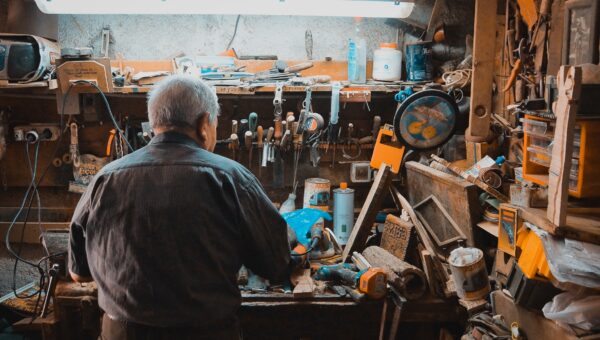Lathes Through Time; How They’ve Changed
8 Jan 21
A lathe is an old tool that rotates a workpiece, allowing for material to be cut, drilled, sanded and faced. Traditionally, lathes were created for woodwork, but they can be used for work with a wide variety of materials in this modern day.
While technology has developed to create computer-operated lathes for our current operations, lathes as a concept are thousands of years old. Just how have we arrived at our technological, super precise CNC lathes from the ancient lathe? Here is a brief look at lathes through time and how they’ve changed over the years.
The Ancient Egyptians
The Egyptians developed and introduced a two-person lathe at around 1300 B.C. The two-person lathe had one person using a rope to turn a woodwork piece, while the second person used a sharpened tool to cut the wood material into their desired shape. The process of using a two-person lathe wasn’t very refined, but it provided stability during the turning of a workpiece that human hands couldn’t achieve.
The Ancient Romans
While the two-person lathe was being developed in Ancient Egypt, the Ancient Romans were creating their own form of the lathe. A turning bow was added to the Roman lathe, enabling the people to create containers and boxes with lids out of material. The Romans could also create furniture with the advances they had made in their woodturning lathes.
Early Europe and China
In around 200 A.D. Europe, a lathe spindle could be driven with a one-foot pedal, leaving both hands free to carve workpieces. A similar model had been developed in China by this time, but the Chinese lathe utilised two-foot pedals rather than one. The early lathes in China and Europe could create simple furniture, decoration and crockery.
The 15th Century
Throughout the generations leading up to the 15th century, steady improvements were made to the simple lathe. Heavy lumber was introduced to the frame of the lathe, increasing the stability and the strength of the tool. Still, the actual structure of the machinery didn’t develop past the basic framework established earlier. Operation of these machines was still very much manual and required some skill from their engineers.
The 18th Century
The Royal Arsenal in Woolwich saw the creation of one of the first horizontal boring machines. It was installed to produce canons and operated on horsepower. This boring machine turned the workpiece rather than turning as a tool itself, so it was technically a large lathe! Water wheels and steam engines were eventually utilised over horsepower, making the boring machine faster and more efficient.
The 19th and 20th Century
As the understanding of electrical power grew during the 19th and 20th centuries, individual electrical motors powered each lathe. Starting around the 1950s, servomechanisms were applied to the control of lathes too! Eventually, numerical control was coupled with computers and developed to create the CNC lathes we know today. Manual lathes are still manufactured too!
Modern CNC Lathes
In today’s world, a virtual drawing of finished components is used to create a code that CNC lathe machines can read and use to move their cutting tool. These CNC machines are, therefore, highly accurate, not subject to human error, and able to create components with seriously complex geometries. The extreme accuracy of CNC lathing means that parts can be perfectly engineered for industrial structures like aeroplanes without any errors.
Speak to a Lathe Expert
If you have any further questions about lathes and how they could benefit your business, whether you’re interested in a manual piece of equipment or computer numerical control, then please contact us at DTS UK.
Learn More About Lathes
For more useful guides on lathes, explore our blog. We have many posts covering all areas of lathes to help you understand what they are, how to best use and maintain them, and how to choose the right one for your needs. Here are a few posts we think you will like:
Lathes FAQs
What are the different types of lathes?
Lathe machines come in various types, vertical lathes, horizontal lathes, speed lathes, bench lathes, turret lathes, and CNC lathes. Each type serves different purposes and caters to specific machining needs.
Are all modern lathes CNC machines?
No, not all modern lathes are CNC machines. While CNC (Computer Numerical Control) lathes have become increasingly prevalent and offer advanced automation and programming capabilities, conventional manual lathes are still in use today. These manual lathes rely on the skill and expertise of the operator to control and manipulate the machine manually. However, CNC lathes have gained popularity due to their precision, flexibility, and ability to execute complex operations with minimal manual intervention.
What is the difference between a CNC lathe and a CNC mill?
A CNC lathe rotates the workpiece or bar stock, allowing the cutting tools to shape it. On the other hand, in a CNC mill, the cutting tools rotate around the bar stock while it remains stationary. This distinction means that the lathe primarily focuses on rotating parts and shaping operations, while the mill specialises in milling and cutting tasks to create intricate shapes and profiles.



